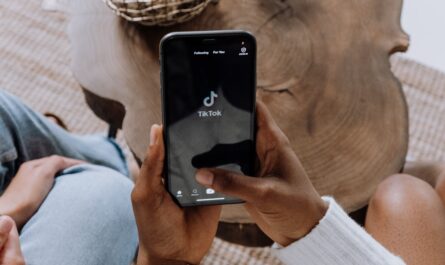By: Mark Yasak
As smartphones and other mobile devices have become more prevalent, the percentage of content being consumed on mobile has grown at an incredible rate. According to Limelight’s annual State of Online Video report, viewers spent an average of six hours, 48 minutes watching videos online each week in 2019, with smartphones being the primary viewing device.
However, of all videos watched on mobile last year, 85% were created in a format suitable for a larger screen. This is notable because, according to Covideo, mobile users hold their phone upright 94% of the time, and only 13% of people will switch their device horizontally to watch a video.
This is an important statistic to consider when creating mobile content, especially when attempting to reach younger Gen Z and Millennial viewers. Not only do these generations consume the majority of all online video content, but they are also significantly more likely to be watching on a mobile device. Therefore, when relying on the services of a Video Production Company, one may want to keep in mind that they cater to such requirements and the growing trends that majority of the population opts for.

With seemingly endless entertainment options available at all times, it now takes consumers less than eight seconds to decide if something is worth their attention. If a user opens a video on their phone and the video isn’t oriented properly, chances are they won’t rotate their phone to watch, regardless of how captivating the video may be.
However, this change does not mean that all videos created moving forward should be produced in portrait mode. When creating a video, the most important thing for a social media manager or content creator to consider is the platform on which they will be publishing it.
On apps like Instagram and Snapchat-which helped popularize vertical video-users have come to expect content that is properly oriented for their smartphone.
On a platform like YouTube, however, users may be searching for a longer, more professionally produced video that would be better consumed with their device turned horizontally. It might also be important to consider choosing the right music accompanying any video content, as music, too, can have a captivating effect on the audience. Thankfully, easy availability of stock music from the likes of Shockwave-Sound – Royalty Free Music for YouTube has made it easier for brands to produce professional videos with music, which can keep the audience entertained and interested.
The length of the video also plays a major factor. If a company shares a ten-second clip, it’s probably not worth the viewer’s time to turn their mobile device horizontally. However, if a company posts a three-minute video and the viewer commits to watching, they may prefer to watch with their device in landscape mode.
Regardless, long-form video platforms like YouTube and Netflix have embraced the shift in preference. In 2018, Netflix introduced 30-second vertical video previews on its mobile app. According to the company, although only 20% of all Netflix viewing happens on mobile, more than 50% of all subscribers access the platform on their mobile device each month.
YouTube also made changes to its platform to accommodate mobile users, stating that more than 70% of watch time happens on mobile devices. In 2015, the company made its first modification to accommodate mobile users by removing the black bars that originally appeared alongside any video shot in portrait mode. In 2018, the platform fully embraced the change by allowing vertical videos to be viewed on its non-mobile site, while also allowing brands to run video advertisements that conform to a user’s mobile screen.
While it is highly unlikely that videos shot in landscape mode will disappear from social media, it’s obvious that content creators can no longer create videos without considering the viewing preferences of the intended target audience. By adjusting production standards to accommodate the preferences of today’s viewers, companies can better engage with consumers while ultimately holding their attention for a longer period of time.
Follow me on Twitter and LinkedIn




Hi Mark, this is really interesting. I found myself reading an article last night, and there was a data table displayed. I couldn’t read it vertically and had to move my phone horizontally. Personally, I much prefer reading an article vertically, I’m not really sure why as it covers the same space. I think a person’s preference phone alignment with reading articles, sending texts, etc. can influence one’s preference when watching videos.
Hi Mark,
Hi Mark, I really enjoyed reading this piece. I have never personally created any significant video content so this was a new concept to me. You make an excellent point regarding the time it takes a viewer to decide whether or not to keep viewing something and if a video is displayed properly on a mobile device. I can see how this concept affects my personal viewing habits. It is easy to see how platforms like Instagram have created the popularization of portrait mode shot videos. As someone who probably uses video content platforms more than the national average, your article has made me think about my personal consumption and how I choose what content is worth my attention.
Interesting article, Mark. This is something that I can see a lot of companies (especially smaller sized ones) not paying enough attention to as they prepare to launch video content. While it may seem like a small detail, it can mean the difference between someone engaging with your content or not. I personally tend to rotate my device horizontally anytime I’m watching a video (assuming it was made for horizontal viewing) just because it fills up more of the phone, so it was interesting to read that only 13% of people do this. Anyways, your article definitely will make me think about how I’m creating content in the future and which orientation I’m using for videos. Thanks!
Mark,
Sometimes trends go unnoticed. People carry on in their day-to-day lives and don’t give any thought to how they are using their devices. That’s where we come in. Analysts, business people, opportunistic marketers, and researchers are the ones who actually identify and call out the trends. The trend towards vertical video is one that has been in the making for some time. I think in addition to the streaming services that are gearing their content more towards the vertical layout, brands are also following suit. As more and more people shop via mobile device, brands are developing content to be oriented to suit whichever device is used to browse content. Those who do not optimize for app or mobile purchases are sure to feel the consequences of lagging behind in this area.
This was super interesting, Mark, and made me think about the way I view video content on my own phone. Without even thinking, I watch IG videos as they are in posts but turn my phone horizontally for longer YouTube videos (I’ve watched like one movie on my phone, on a plane, and it drove me crazy, so Idk how people do that all the time). This is a really helpful article for me to consider because I’m doing a social media internship and need to keep this type of data in mind when creating content.
Hi Mark,
Great post chock full of content marketing insight. In this world where mobile phones have dominated media consumption, it’s almost wild to me to think about how few content creators are thinking about this kind of thing. All too often I see brands that are doing one mass posting of similarly formatted content across all social media channels. What you said above absolutely rings true: content marketers must be aware of their distribution platform when designing video content. You might have the most creative-looking piece of media, but if your viewer is so turned off by the formatting incompatibility that they never actually pause to watch it… Sounds like a big waste of marketing dollars to me, ya feel?
This is interesting for those looking to be content creators, it is important to know how your target audience consumes your content. I wonder how phone manufacturers are using this to determine ideal size of the phones they are creating. This is important beyond video content as well, some websites or articles that get cut off when a phone is held vertically can make it easy for consumers to leave the site. These creators should consider consumer behavior and make sure content is created to be easily consumed vertically.
This is interesting for brands that get their commercials included right before the content consumers are really trying to consume. You have to make an impact in a few short seconds and you are fighting for the consumers attention because they can easily mute or skip the ad. I also had never really thought about the horizontal vs. vertical view. My phone is automatically locked into vertical mode so I also watch videos that way unless it is a tennis highlight and I need to see it on a bigger screen. It is much harder in this day to grab consumers content when their are distractions everywhere
Hi Mark,
The new wave of short video advertising is here and companies are starting to catch on. Snapchat, Instagram, and Facebook and Twitter have different layouts which requires companies who are looking to advertise, plan their promotions accordingly. I like the tweet that you pulled from Matthew Kobach because it is very true. Consumers will be more attracted to an advertisement if it resembled the content they are already looking at and was in the same format. With our attention spans decreasing, like you say, it is important for companies to capture the attention of consumers while requiring a minimal amount of effort to interact with the content.
Hey Mark,
It’s interesting to see this concept in action. Considering how easy it is to turn our phones horizontally, you wouldn’t think vertical integration of videos would be too big of a deal (I will turn my phone horizontally if I’m interested in a vide). Still, interesting to see the research and how content is being developed based on where consumers are actually consuming the content (i.e. phone, tv, desktop, etc.) I personally don’t see the horizontal layout disappearing anytime soon, but will be interesting to see what starts to get integrated into vertical formats as we move forward.
I have noticed this trend myself. I personally am one of those statistics who only turn my phone for those videos that I personally seek out in order to get a better view, these being streaming sites (Netflix, Hulu, and Disney+) and Youtube videos. I had a professor explain this trend specifically through Snapchat’s use of video ads. The professor explained that Snapchat uses the verticle visual display for their ads in order to set themselves apart from other platforms, to create a signature ad style. It displays ads in a way that cuts off the outer edges of the ads, which is another aspect that makes this ad display a unique style specific to Snapchat. This ad style is also beneficial to Snapchat because it caters to the majority of iPhone usage, which as you pointed out is a vertical display. It will be interesting to see how more apps continue to cater to this ad audience and how they do so in their own personal style.
Hi Mark,
I have definitely seen this trend, and find it really interesting. I found myself watching a video the other day on YouTube and wanted a wider view so I turned my phone horizontally. It’s so convenient how easy it is to just move your device and have both a vertical or horizontal option. I normally watch videos or read an article vertically, however I do think that if I’m really wanting a better I do find myself turning my phone horizontally. It’s so interesting to see the research that is being done. I’d be curious to see what content comes out using only vertical layouts in the future.
I remember discussing this in my first college class ever J100. I remember thinking that by now a lot more content would be vertical, and I think some of the biggest proof of this in action is Snapchat and Instagram advertising, and that promoted sponsored content in Snapchat stories. I totally believe the next trend is silent video, because more and more data is showing how few people scroll without audio. I could see this changing media entirely.